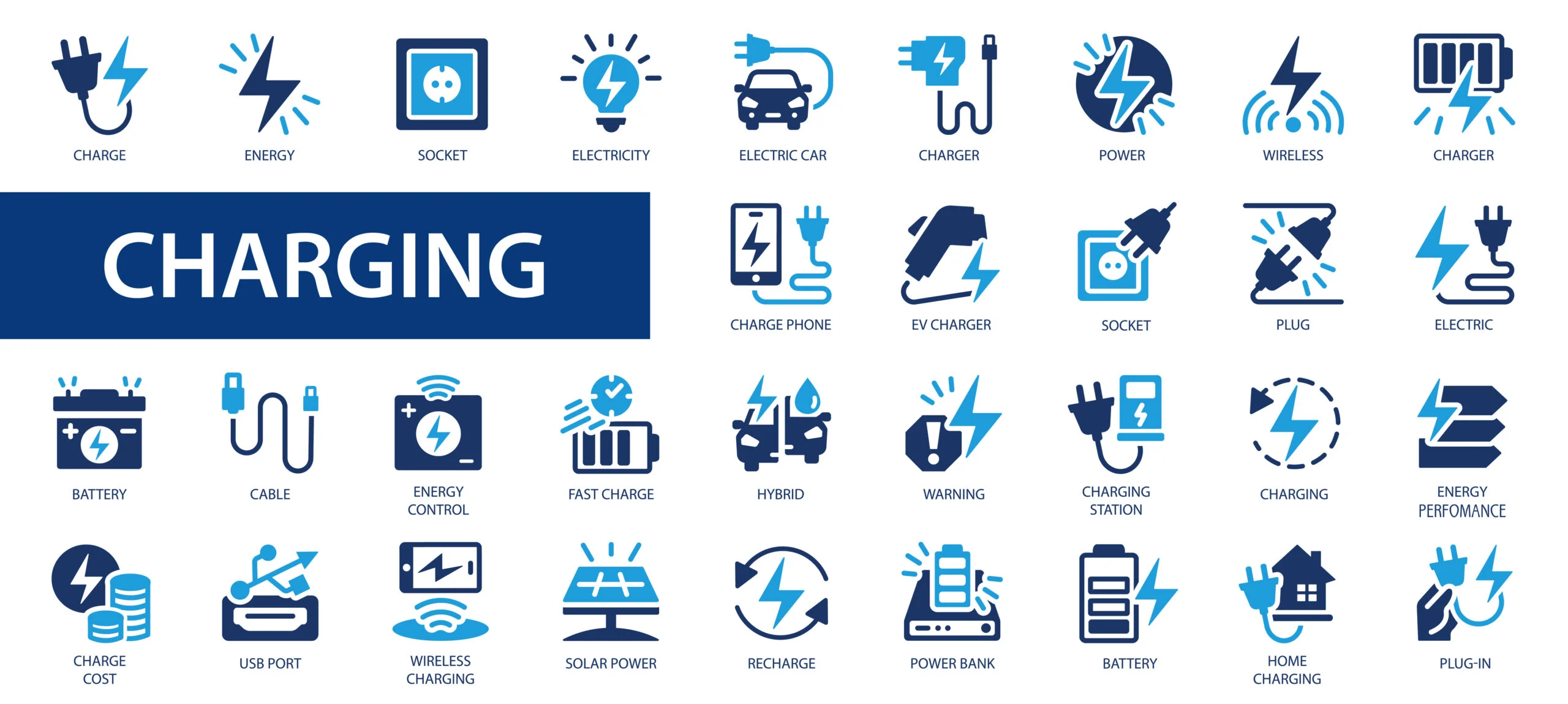Earlier this week, The Economist identified grid-scale battery storage as the next trillion-dollar industry in clean tech. This observation parallels increases in battery storage, which is expected to nearly double by the end of 2024. Research indicates that distributed energy resources (DERs) including solar, batteries, electric vehicles and EVSE, and smart home devices like thermostats and water heaters are expected to double by 2027. The increased adoption of these DER technologies is further evidence of public and private investment in renewable energy technologies and represents an opportunity for utilities to engage in demand flexibility programs like demand response or EV managed charging. With more DER adoptions comes a reciprocal increase in the battery energy storage systems (BESS) needed to help defray the high costs of peak energy purchasing, increase grid resiliency, and mitigate the effects of climate change. So how can your utility put these systems to use?
What is BESS in Life?
Battery energy storage systems (BESS) are, as the name implies, a mechanism used to store excess energy. As such, these systems are often combined with photovoltaic solar or other electric generation technologies to support any overproduction of power. For utilities, that can mean anything from accessing customer behind-the-meter DER assets to employing BESS technologies to store electricity generated by utility-held assets during off-peak hours as part of a time-of-use strategy. Battery energy storage systems function as simply as their predecessors as a means of storing energy: batteries receive and store energy for use at a later time.
Modern batteries have the opportunity to leverage AI and machine learning to optimize their effectiveness. For example, Topline Demand Control (TDC)—a novel combination of Grid-Edge DERMS, AI, model predictive control, and forecasting software—optimizes batteries to create a reliable outcome for grid operators. Put another way, with TDC, grid operators can request X during a grid event and reliably achieve that outcome through device optimization, making batteries integral in defraying the high costs associated with peak energy demand, while enhancing grid resiliency and mitigating the effects of climate change.
A Brief History of Battery Energy Storage Systems
The concept of batteries has been around for centuries, which includes devices like the Leyden jar, a primitive electro-chemical battery. The first modern battery was introduced in the 1800s, and since that time batteries have remained at the heart of technological innovation with regular advancements in the field. The first grid-scale battery energy storage system (BESS) was introduced in October 2012, commissioned for Portland General Electric. Today, the U.S. Energy Information Association reports that batteries are a rapidly evolving secondary electricity source, rising to 20.7 GW of battery power capacity as of July 2024.
Types of Battery Energy Storage Systems
Battery energy storage systems (BESS) are effectively uniform technologies, although there are two primary distinctions: behind-the-meter systems and front-of-meter systems. FTM systems typically represent utility-held energy assets like solar fields or battery installations. By contrast, BTM battery energy storage systems refer to the growing number of behind-the-meter DER assets driving consumer interest.
Types of DERMS
Whether behind the meter or in front, distributed energy resource technologies like battery energy storage systems are manageable through the use of a distributed energy resource management system (DERMS). DERMS platforms aggregate otherwise disparate DER assets for use in demand flexibility programs like demand response, EV managed charging, or BYOD programs. There are two types of DERMS:
- Grid DERMS – Grid DERMS are used to aggregate utility-held DER assets, including battery installations. Grid DERMS are behind a firewall and typically located near the devices they control.
- Grid-Edge DERMS – By contrast, a Grid-Edge DERMS aggregates behind-the-meter DER assets at the edge of the grid: on private property.
Together, the two represent a parallel set of strategies, both in managing utility-held DER investments, while also aggregating the DER assets increasingly available in all service areas. Since Grid DERMS manages utility-held assets, they are often relied upon by grid operators to meet day-to-day demand. Fortunately, Grid-Edge DERMS benefits from Topline Demand Control functionality, which removes the uncertainty from load management by optimizing devices to ensure a reliable outcome.
The Importance of Battery Programs
Last year, the DOE announced that between 80-160 GW of virtual power plant capacity is needed by 2030 to continue to meet demand. For now, between 30-60 GW, around 37.5%, of VPP capacity is currently available primarily from demand response programs. As such, virtual power plants are, effectively, all demand flexibility programs, or rather, any aggregation of power. Battery energy storage systems help satisfy this objective as an affordable option for both consumers and utilities, as a source of clean energy, and as a DER asset that can be manipulated to help meet demand as needed.
Using Batteries in Demand Flexibility Initiatives
As noted, demand flexibility programs feature several peak shaving/conservation strategies meant to shift load to off-peak hours of demand. For example, demand response aggregates behind-the-meter devices like thermostats or water heaters to decrease usage during grid event windows, cumulatively lowering the communal demand. Conversely, battery energy storage systems have many demand flexibility possibilities.
Through the use of a Grid-Edge DERMS, utilities can call charge or dispatch/discharge commands while leveraging batteries during grid events. In this process, program managers or grid operators can specify battery charge windows or discharge usage as needed to meet demand. Topline Demand Control builds on this concept by allowing battery energy storage systems to be adjusted in real-time so that the total power output of the collection of batteries follows a desired power level while optimizing each device to get the very most out of each.
Event Types
Just as there are Grid and Grid-Edge DERMS and BTM and FTM battery energy storage systems, there are multiple ways to run a grid event with batteries. Let’s take a look at a few of the most common.
- Site Demand Events – These are events designed to hold power consumption at a specific location (i.e. a meter) at a constant.
- Frequency Support Events – A frequency support event monitors dips in energy frequency. If the frequency is more or less than the assigned value, program managers can inject power accordingly to meet demand.
- Locational Marginal Pricing Control – For this type of event, utility program managers control charging and discharging in response to market signals to help utilities meet energy arbitrage objectives.
These are just a few examples of how utilities may run any demand flexibility program, specifically as it relates to battery energy storage systems. With a robust bank of API and integrations, utilities can leverage multiple device types to not only broaden load shifting and peak shaving objectives but to group programs to meet demand in specific areas or to value stack programs, which in turn minimizes customer disruption.
Battery Energy Storage Systems & Demand Flexibility Conclusion
Over the last several years, our partners at Green Mountain Power (GMP) have worked to provide cost-effective battery energy storage systems for their customers as part of their demand flexibility strategies to mitigate service failure, while minimizing high peak-energy costs. Battery programs are incredibly effective at minimizing these challenges.
GMP’s success in realizing its battery program dreams is one step in mitigating the incredibly high costs of upgrading grid infrastructure, which analysts believe will cost $2.5t by 2035 already. Fortunately, legislation like the Bipartisan Infrastructure Law or Inflation Reduction Act has already helped utilities realize these investments; as of August 2024, the Grid Deployment Office (GDO) has already awarded $4.23b to help modernize the grid, further indicating both the potential and investments going into DER assets like battery energy storage systems. With the right tools, utilities can manage both behind-the-meter DERs and utility-held assets to flexibly and reliably meet demand.





